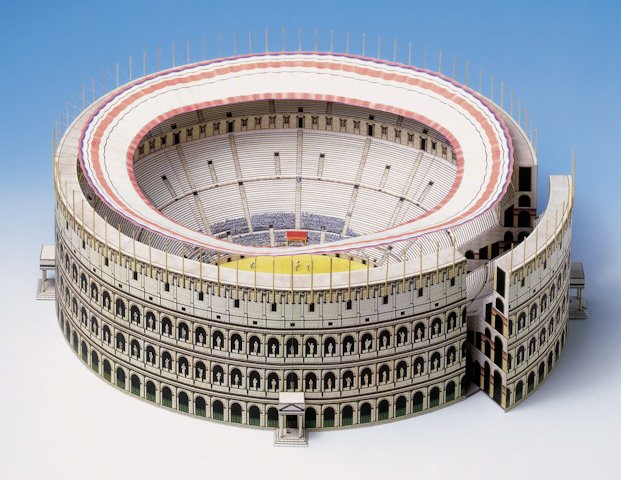Coliseum Rome

Scale: 1:400
Length: 47 cm
Width: 39 cm
Height: 14 cm
Degree of difficulty: 2 (moderately difficult)
Number of sheets: 13.5
Coliseum Rome
The Coliseum in Rome was the biggest amphitheatre of the ancient world and served as an example for the arenas of Verona, Aries, Nimes and many others. In the time of the ancient Romans, the theatre had the name "Amphitheatrum Flavium" which was only in the 11th century replaced by the name "Coliseum" (because of a statue with a height of 35 m). The eliptic building had a length of 188 m and was 156 m wide. It was dedicated in about 80 AD and served as a scene for gladiators" fights and wild animal hunts. The dedication was celebrated for 100 days. There are differing estimations about how many spectators the Coliseum could actually hold, but one can assume a number of 40,000 to 70,000 people. These figures show that the Coliseum was a gigantic arena which was built in a highly sophisticated manner. Inside of the building, for example, it had many stairways and corridors allowing all spectators to leave the arena within one hour. Under the scene, there were corridors and channels that even enabled the arrangement of mock naval battles. Cells and warehouses were also situated underground. The building"s exterior was covered with stone plates made of travertine, the stairs and seats were made of marble. It was used for public events until the 6th century. Beginning from the 13th century, the building fell to ruin. It was damaged by earthquakes, but also served as a quarry for new buildings. So, the Coliseum was increasingly ruined until it was dedicated as a martyrs" venue of the persecuted Christians in 1749. After that, the remainders were secured and renovated.
